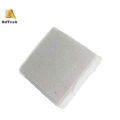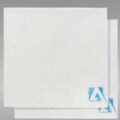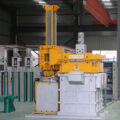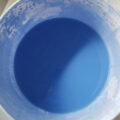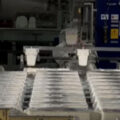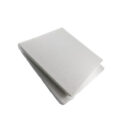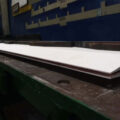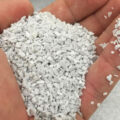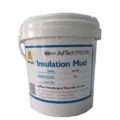The molten aluminum CFF filter is placed in the filter box, and the filter is arranged at a position upstream of the mold to remove alloy inclusions in the molten aluminum.
The molten aluminum CFF filter includes a gathering mesh member made of a refractory material and a coating layer formed on the surface of the mesh member. The coating has sodium silicate and sodium carbonate, which can be softened or sticky at the temperature of molten aluminum or molten aluminum alloy.
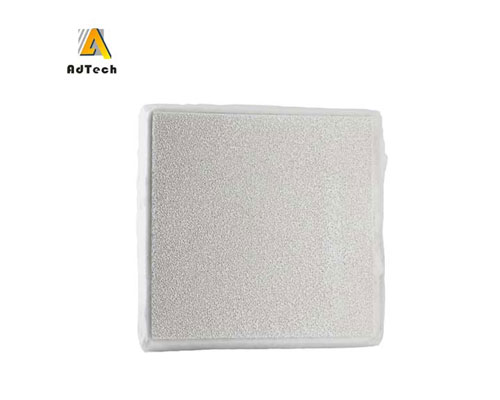
The aluminum raw material is melted to obtain a molten aluminum alloy, and impurities are removed from the molten aluminum alloy by adsorbing the impurities with sodium silicate and sodium carbonate, thereby filtering the molten aluminum alloy and casting the molten aluminum alloy.
When the assembled mesh member is coated with sodium silicate to form an internal filter, the resulting filter has the following advantages:
It is possible to ensure firm adhesion between the paint and the surface of the mesh member, thereby resisting the impact strength and adhesion strength of molten metal.
Even in the case where the mesh member has two or more meshes per linear inch (ie, two or more openings per inch), a compound such as sodium silicate can be sufficiently covered.
Can significantly improve the removal rate of fine inclusions of about 10 to 25μm.
It is currently expected that the resulting aluminum alloy ingot contains 200 ppm or less of oxide inclusions, such as alumina. In order to reduce the content of inclusions to such a low level, the coating amount of sodium silicate is adjusted according to the particle size and content of the inclusions in the molten metal. If the aggregate mesh part is covered by too much soda silicate and the filter screen is too fine, when the amount of inclusions is large, the filter screen will be clogged during short-term operation. This will shorten the life of the CFF filter and cause poor adhesion between the paint and the surface of the aggregate mesh. Therefore, in order to prevent these problems, it is preferable to select the coating amount of sodium silicate in the range of 0.05 g/cm 3 to 1.0 g/cm 3.

